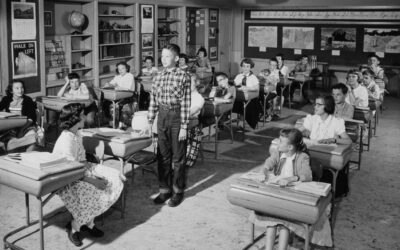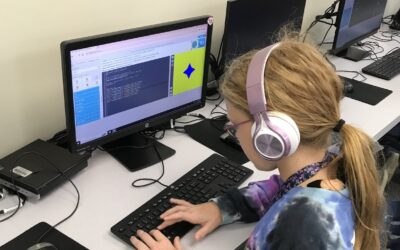Studies on the Digital Readiness Divide
The skill prerequisites for digital readiness are not implicitly developed, and research continues to confirm that direct instruction and technology practice are necessary to nurture these skills.
Example 1. Digital Readiness Among American Adults
According to a report published by the US Department of Education in 2018, 16 percent of working-age adults (16 to 65 years old) are not digitally literate when assessed using standards defined by the OECD. However, the rate of digital literacy varies greatly across demographics.
For instance, while only 11 percent of white adults are digitally illiterate, this rate is much higher among Black (22 percent) and Hispanic adults (35 percent). Moreover, a lower percentage of native-born adults (13 percent) are digitally illiterate compared to foreign-born adults (36 percent).
Although a little outdated, a study led by John B. Horrigan quantified the divide among adult Americans as follows:
- 29 percent of adult Americans have low levels of digital readiness.
- 42 percent have moderately good levels of digital skills.
- 29 percent have high levels of digital skills.
- 70 million are not “digitally ready” for robust online use, nearly twice the number (36 million) of people with no online access.
Horrigan notes that when atomizing the data those ranking with low levels of digital skills tended to be older, have less education, and have lower incomes compared to their more skilled counterparts.
While the numbers themselves change as technology becomes increasingly prevalent in day-to-day life, Horrigan’s summary of his finding sustains: “As a nation, we need to make the investments so that communities and government have a similar capacity to help citizens be digitally ready… it is in everyone’s interest to take steps to ensure all Americans can take advantage of [technology’s] benefits.”
Example 2. Web IQ Aggregated by Age and Educational Attainment
In a separate study by Pew, researchers surveyed adult Americans to gauge their Web IQ and aggregated the data both by age and educational attainment.
When segmenting by age, the study finds that younger people are more knowledgeable in topics pertaining to social media; but they rank equally or even below their older counterparts when it comes to basic technology functionality, policy governing tech, and other digital citizenship factors.
When segmenting by educational attainment, the study finds a correlation between a person’s schooling level and their technological prowess.
These findings disavow the common ‘digital native’ narrative, which alleges that young people are predisposed to have advanced digital skills. Instead, education seems to have a larger influence on digital readiness.
Example 3. Digital Nativism Disavowed
Further refuting digital nativism, research by Neil Selwyn uncovered that technology use among digital natives is limited to only a few activities, such as using social media. As a result, younger generations do not have the prerequisite digital skills needed to thrive in modern academic and workplace environments.
Beyond the inaccuracy of the digital native label, this narrative often overlooks and even perpetuates the digital readiness divide among youth, according to research by Paul A. Kirschner and Pedro De Bruyckere.
The Digital Readiness Divide and Equity
In response to the digital readiness divide there is a major push to upskill today’s workforce, educate adults about safe online behaviors, and inform everyone about information and media literacy. At the same time, teachers can help students graduate digitally ready and able to lead as examples by addressing digital skills in the classroom.
While working to close this divide, however, it is essential that we consider it in the larger context of digital equity and recognize that the access and connectivity divide haunts the digital readiness divide. Inequitable access and connectivity breeds exclusion and limits opportunities to develop digital skills.
Students who lack access and connectivity, whether in school or at home, have less experience using technology and are likely to have families with less experience. The digital readiness divide, in this context, is more likely to impact non-white, impoverished, and rural students, which preys on already existing inequity.
To combat this trend, comprehensive solutions must be built from the students out to the community. For example, some schools are pursuing family-wide programming, whether through after-school programs, parent resources, or collaborative homework.
Digital skills thrive in community environments—positive online behavior and informed technology use begets more.
This article was originally published in July 2020 and has since been updated.

Learning.com Team
Staff Writers
Founded in 1999, Learning.com provides educators with solutions to prepare their students with critical digital skills. Our web-based curriculum for grades K-12 engages students as they learn keyboarding, online safety, applied productivity tools, computational thinking, coding and more.
Further Reading
What the History of Personalized Learning Teaches Us About It Today
Personalized learning is an educational approach that tailors instruction to meet the unique needs and progress of each individual learner. It goes...
Florida Teachers Discuss Teaching Coding in Middle School
Computer coding is becoming an increasingly popular class for middle and high schools to offer. To date, 41 states have adopted K-12 computer...
What is Future Readiness for 21st Century Citizenship?
Future readiness in education refers to the intentional preparation of students for the dynamic and evolving challenges of the future. It takes a...




